Between cultures and kitchens: Chef Edward Lee’s story beyond Culinary Class Wars
He has cooked for presidents, competed on global television, and built restaurants with a conscience. But for Edward Lee, the real journey is rediscovering his Korean roots.
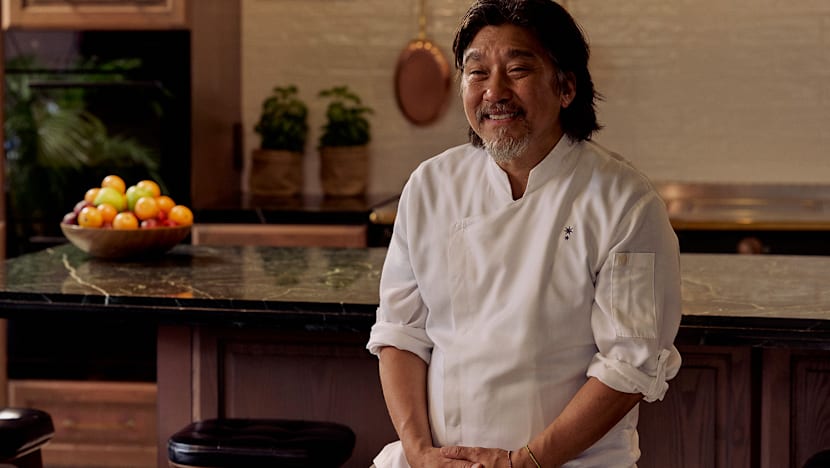
Chef Edward Lee. (Photo: Capella Singapore)

This audio is generated by an AI tool.
It’s best not to come between a chef and his jang. Edward Lee arrives from our interview mid-prep, pulled from a fermented sauce he was stirring in Fiamma’s kitchen in Capella Singapore. A touch travel-weary and distracted, he’d barely been in the country for 12 hours, fresh off a flight from Seoul.
But Lee has always been between places. Born in New York to Korean immigrant parents, shaped in the American South, and now rediscovering his Korean heritage, the 53-year-old has built an impressive career that hopscotches between geography and identity. He’s a familiar face on television – appearing on top-rated shows like Iron Chef America, Top Chef, MasterChef, and The Mind of a Chef – and runs restaurants in Kentucky, Washington DC and Maryland: 610 Magnolia, Succotash Prime, Nami, and most recently, SHIA. He has written three books; his second, Buttermilk Graffiti, won a James Beard award. In 2023, he cooked for South Korea’s president Yoon Suk Yeol at the White House State Dinner. His menu? Galbi-jjim with butter bean grits, Maryland crab cake with a gochujang vinaigrette slaw, and – memorably – ice cream drizzled with doenjang caramel.
His is the story of Asian-American success but also something more: A restless pursuit of culinary possibility, and a quest to understand how his Korean identity fits in the mix.
Last year marked a turning point. In South Korea, Lee became a household name after finishing runner-up on Culinary Class Wars, a Netflix juggernaut watched by millions. That was followed by Edward Lee’s Country Cook, a television journey through South Korea’s rural kitchens. In Washington, his innovation-driven Korean fine-diner SHIA opened to acclaim for its inventive re-interpretations of Korean flavours – and its admirably strict no-plastic policy. Meanwhile, his non-profit, the LEE initative, continues to push for diversity and sustainability in American kitchens.
And in Seoul, he was just named Chef Ambassador for Capella Residences Seoul, the group’s Korean debut, slated to open in 2027 in Seochu-gu’s Heonin Maeul, one of Gangnam’s most affluent quarters. To mark the appointment, Lee staged a one-off dinner at Capella Singapore on Aug 8 with the hotel’s culinary director, Eric Neo, threading together the flavours of America’s South, South Korea and Singapore over five courses.
GROWING UP WITH SIMPLE FLAVOURS
Lee’s beginnings were modest. “My mother and grandmother cooked mostly Korean dishes at home and we ate very simple food,” he recalled. “Kimchi stew, doenjang jjigae (soybean paste stew), miyeok-guk (seaweed soup), lots of vegetables. Korean barbecue and galbi were special-occasion foods.”
Those simple flavours still underpin his cooking. “To me the essence of Korean food is very soft and subtle,” said Lee. “It’s not always about spiciness and garlic – Korean food is also about pine nuts, root vegetables, vegetarian dishes, different seaweeds. I want people to understand that side too.”
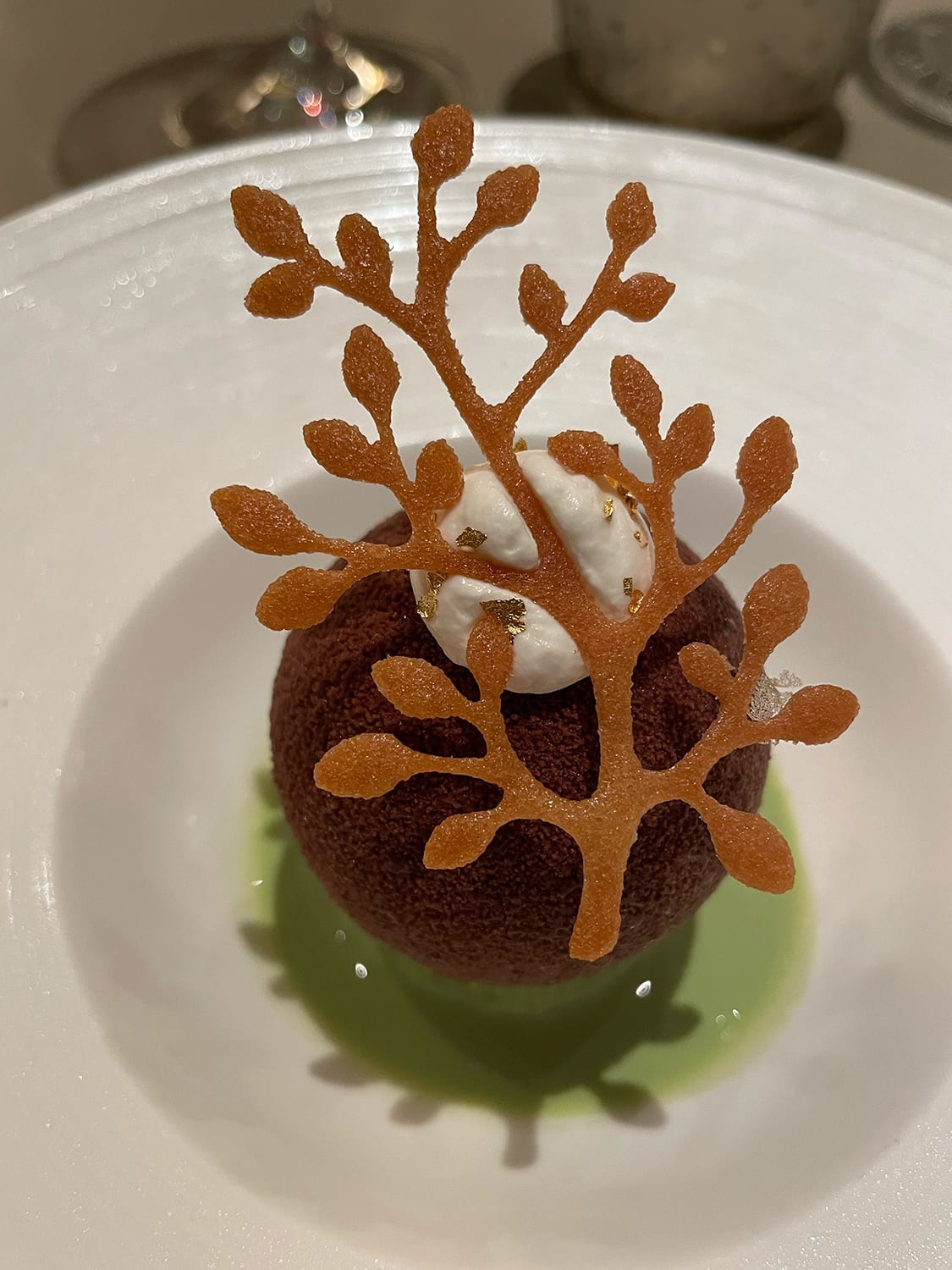
At SHIA, dishes mine this gentler side: Amberjack with jeotgal (fermented seafood) and an emerald crisp made of rare, hand-harvested gamtae seaweed; pork belly with abalone and clams in a three-rice porridge laced with dashi; a “tea” brewed from fish scraps and white kimchi juice. The food may look modern, but the tastes draw respectfully from history, with unexpectedly powerful effects.
One diner was so overcome by nostalgia he was brought to tears, Lee recalled. “He told me: ‘I haven’t tasted this flavour since I was a little kid in Korea.’”
This duality – showing diners the depth of Korean cuisine while rediscovering it himself – has long defined Lee’s career. At 610 Magnolia, collard greens simmered in kimchi stew became an early signature. “Collards are very Southern, but they grow in a similar climate as cabbage in Korea,” said Lee. “When you cook this very Southern ingredient with kimchi stew, you get a beautiful dish, but also a beautiful combination of two cultures.”
A TASTE OF SINGAPORE
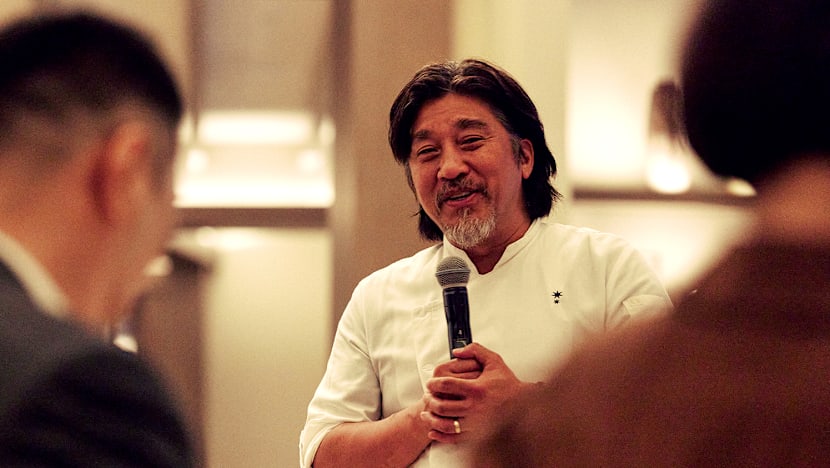
Despite a large TV crew shadowing his every move at Capella, Lee slipped away for lunch at Yang Ming Seafood at nearby VivoCity (Neo’s recommendation), where he enjoyed fried fish in spicy sauce, lobster and chilli crab. “It was a lot, and the fish was incredible,” he said of his first taste of local cuisine.
“For the dinner, it was about balancing what we want to do with Capella Residences Seoul and the flavours here. It’s my first time in Singapore but I’ve visited other Southeast Asian countries like Malaysia, so I know a little bit about the region’s flavours,” said Lee, who prepared three of the five dishes alongside Neo’s two.
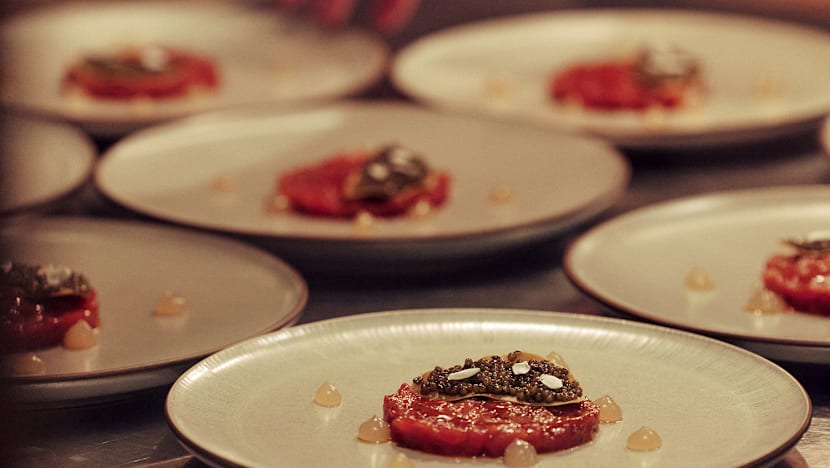
There was a disc of tuna tartare with gochujang, osetra caviar and dots of Asian pear gel; ultra-tender galbi-jjim with a wedge of ginseng-infused Pommes Anna (sliced, layered potatoes), jujube and parsnip purees and a dusting of perilla powder.
His second dish featured octopus served atop a potato puree amped up with mu, a Korean radish which Lee said “makes it a little lighter and spicier. Adorning the mollusc were spears of tangy pickled cucumber, tobiko pearls and an intriguing chimichurri, which featured not the usual parsley and paprika but perilla leaf and a Korean fish paste containing gochugaru. “Korean people will find the taste familiar but won’t have seen it used this way before, while non-Koreans will find that it tastes like chimichurri, but not like any chimichurri they’ve ever had,” he said.
“I love taking Korean ingredients and pushing them into a different landscape,” he added. “Not really Korean, not really Western, but a mix.”
CULINARY CLASS WARS AND THE RETURN OF “KYUN”
Having sworn off competition shows for 15 years after Top Chef, Lee agreed to join Culinary Class Wars only because it was filmed in South Korea. “It wasn’t about winning,” he said. “I realised my real goal was to understand who I am as a Korean person.”
Mid-season, he made himself a promise: If he reached the finals, he would reveal his Korean name, Kyun, on air.
“I’d never used it. Everyone knows me as Edward. Once you’re an adult, there’s never a convenient time to suddenly change your name, right? But I thought, if I make it, what better way than to do it on a TV show?” He did, and his emotional reveal became one of the show’s most talked-about moments.
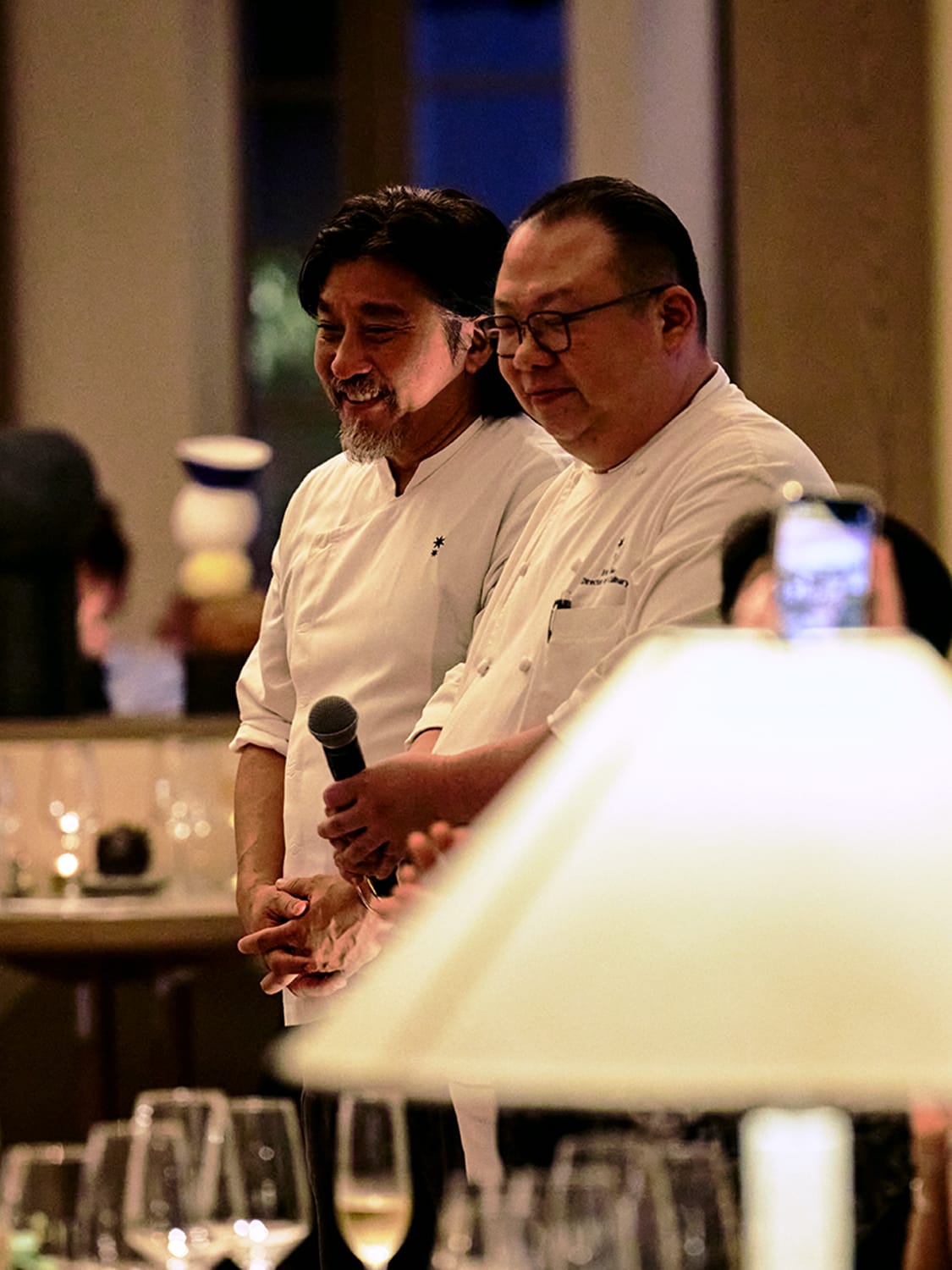
The show’s success led to Edward Lee’s Country Cook, which took him to small family kitchens in South Korea’s provincial towns. “Seeing doenjang made by grandmothers in small batches completely changed the way I look at Korean food – it tasted like an entirely new ingredient and nothing like the doenjang you buy in supermarkets,” he said. It’s precisely that artisanal spirit he plans to showcase at Capella Residences Seoul, with small-batch sourcing and limited menus. “Most big restaurants can’t do that,” he said. “Here, because it’s small and intimate, we can.”
For Lee, the Capella Residences Seoul project also represents an opportunity to cook in South Korea rather than about South Korea.
“All my work references Korean food from America,” he said. “Now I’m doing it inside Korea. It’s very different. I’ll keep tinkering with dishes until we open, because every new farm visit or ingredient I try sparks an idea. It’s constant learning.”
THE LEE INITIATIVE
Founded in 2017, the LEE Initiative has pushed for inclusivity and sustainability in American restaurants, with programmes for female chefs, Black-owned businesses, and pandemic-era workers’ relief.
“Kitchens are really hard places to work in,” said Lee. “But if you want this industry to have a future, you need more balance – more inclusive, more diverse. Historically, women wrote cookbooks and ran restaurants in America. It’s only when restaurants became profitable, competitive, that they became male-dominated. We’re just trying to restore that balance.”
Sustainability is part of the same arc. To start, SHIA’s team identified and suggested sustainable swaps for 31 common plastic items used in restaurant kitchens, such as cling wrap and disposable gloves. Plastic quart containers, for example, were replaced with ceramic, stainless steel and glass containers. SHIA’s no-plastic rule has made headlines, but for Lee it’s less provocation than common sense. “Fifty, a hundred years ago, Asian restaurants didn’t use plastic. Why do we now? Delicious food doesn’t require it.”
A CHEF WITHOUT BORDERS
For all the accolades, Lee still described himself not as a celebrity but a storyteller.
“You don’t choose to go into TV, TV chooses whether it’s going to have you,” he said emphatically.
“TV, books, social media – the medium doesn’t matter,” he said. “My job is to bring the message of my food to people. That’s all I’ve ever wanted.”
That message continues to evolve. While working with Capella, Lee is also filming a BBC documentary on South Korea’s seafood traditions, due for release in 2026. The project will take him to the republic’s coastal villages and fishing towns. “Every time I think I understand Korean food, I discover another world within it,” he said.
With that, he rises to return to the kitchen, signalling the interview is over. Good jang, as it turns out, waits for no one.
















